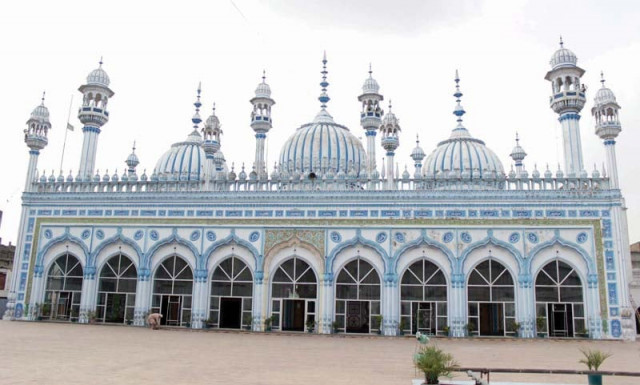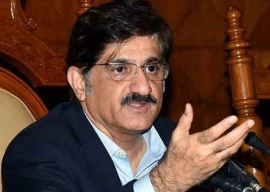
Though the mosque’s exterior has suffered the vagaries of the weather over the years, its interior brings to life the times in which it was constructed – an age when things were built to last. Its foundation stone was laid in 1903 and it was completed in 1905 during the reign of King Edward VII.

According to a past study by The Express Tribune, the rich artwork that consists of bold and graceful mosaic further adds to the beauty of the mosque. The interior of the mosque had been untouched ever since it’s construction.
One has a panoramic view of the mosque the moment one steps through its rustic gate. The courtyard can be reached from the east which is the only entrance. The rich artwork consists of bold and graceful mosaic with floral patterns with earthly hues of red, green, blue and yellow, giving it a colourful appearance.
History has it that the foundation stone of the mosque was laid in 1903 by the exiled prince of Afghanistan Shah Muhammad Ayub.
A cultural historian and expert on the garrison city, Shiraz Haider, had told The Express Tribune that in 1903, when the mosque was built, there were around 80 small mosques dotting the city. But none was large enough for Eid or Friday prayer congregations. “Muslims would mostly offer Friday prayers at Mian Nabi Bakhsh mosque at Purana Qilla,” he said.
Later, Qazi Gauhar Ali, Mian Qutbuddin and Mian Nabi Bakhsh came together to build a Jamia Masjid where Muslims of the city could offer Eid and Friday prayers and have a building they could boast of to the Hindus.
To raise funds for the mosque, Qazi Sirajuddin, an influential of the time, visited different areas of Punjab. “However, the donations were not enough to meet the construction cost and local women ultimately sold their jewelry, Seth Adamjee donated Rs10,000, Seth Kareem Bakhsh, a resident of Peshawar, donated Rs100,000,” Haider recalled.

The mosque was completed in 1905 and Maulana Muhammad Makrani was appointed as its first khateeb. However, the first Friday prayers at the mosque were led by Syed Mahmood Shah while the conngregation was also attended by the Pir of Golra Sharif.
Inside the building
A picturesque fountain stands in the middle of the spacious courtyard which, according to the naib khateeb, can accommodate around 8,000 worshippers.
Moreover, separate rooms were constructed for students for the recitation of the Holy Quran. The upper level of the walls adds colour to the building with hand-painted craftwork. Bricks, thinner than the regular ones, were used for the floor which is covered with decorated carpets.
The lower parts of the interior walls are sheathed in ceramic tiles to avoid moisture. There is also a mehrab in the middle of the interior decorated with pieces of mirrors with a marble minaret where the prayer leader delivers his sermon.
Published in The Express Tribune, October 3rd, 2016.


















COMMENTS
Comments are moderated and generally will be posted if they are on-topic and not abusive.
For more information, please see our Comments FAQ